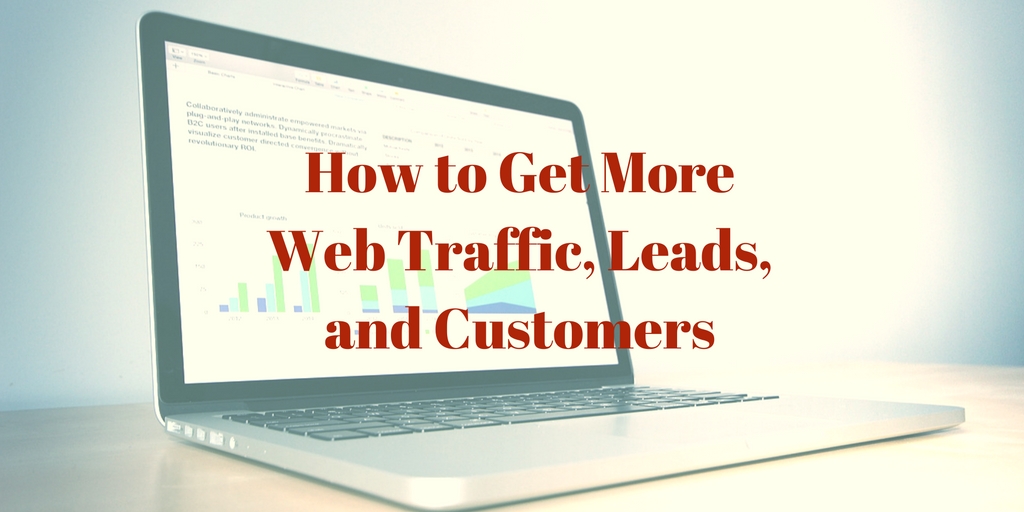
by Fronetics | Oct 3, 2016 | Blog, Content Marketing, Marketing, Strategy
The top-performing business blogs have these six things in common, from posting frequency to outsourcing writing.
Maintaining a blog for your business can be somewhat of a guessing game. How often should you publish? Should you do all the writing in-house? Will anyone read our posts?
A recent survey of 428 marketers conducted by Curata sought to identify any patterns or trends among those with the most successful business blogs. Specifically, the authors grouped together those whose blogs had more than 10,000 views per month and compared them to those with less than 10,000 views per month.
The most successful blogs (those with over 10,000 views per month) have several things in common. Here are some highlights:
1) Size doesn’t matter.
You may suspect that the larger the company, the more traffic its blog gets. That’s not the case. In fact, two-thirds of the most successful blogs were run by smaller companies (<$100M revenue).
2) Age is a factor, but it’s not everything.
Of the most successful blogs, 44% had been up and running for 5+ years. Time gives companies a chance to build up their readership and perfect their content strategy. Yet 65% of businesses who have had a blog for 5+ years did not get 10k+ views/month — meaning there is more to successful blogging than age.
3) Frequency is key.
Blogging frequency impacts factors like search engine rankings and audience engagement. So it’s no surprise that 90.5% of best bloggers blog at least once a week.
4) They set standards.
Interestingly, 80% of the best bloggers have a governance team for blogging activities. This can be many things: ensuring post quality and accuracy, determining best practices, outlining a code of conduct, etc.
5) Outsourcing helps.
The best bloggers rely more on external resources and less on internal resources. They outsource an average of 23.6% of their content production, compared to only 11.8% by blogs with less than 10k views per month.
6) They send more subscriber emails.
To promote their posts, 39% of the best blogs send a newsletter with their blog content to their subscriber base at least weekly. More than half of blogs with less than 1,000 views per month sent subscriber emails as infrequently as once a quarter or, in some cases, not at all.
Read the full report from Curata’s survey here to get more insight into the best business blogs.
Related posts:

by Fronetics | Sep 29, 2016 | Blog, Content Marketing, Logistics, Manufacturing & Distribution, Marketing, Strategy, Supply Chain, Warehousing & Materials Handling
Content marketing can help your organization amplify its efforts to drive traffic, improve conversion rates, and increase sales.
A recent survey of over 4,500 marketers at organizations around the globe found that converting leads to customers (74%) and growing traffic to their websites (57%) were their companies’ top marketing priorities. Perhaps not surprisingly, these marketers also overwhelmingly reported that generating traffic and leads was their top challenge. Often our business priorities are the most difficult to achieve.
Enter, content marketing.
Content marketing is a form of inbound marketing in which businesses publish content to attract prospects who are interested in products in services like theirs. This marketing approach can be highly effective in growing brand awareness, generating leads, and increasing sales. In fact, according to the same survey, organizations using inbound marketing were four times more likely to rate their marketing strategy highly than outbound organizations.
Let’s look at one example from the warehousing sector.
Business was decent for Company X. It had experienced positive growth for over a decade, despite lacking a clear marketing strategy. But leadership started to wonder: Are we missing opportunities for growth?
Company X sought a multi-level digital marketing strategy that would help them increase web traffic, generate more leads, and convert prospects to customers. The team hired Fronetics to create and implement such a strategy.
After 24 months, the results were telling: Web traffic increased by nearly one-fifth (19%). Company X tracked 244 high-quality leads directly sourced from its new content marketing efforts. And new business grew by a remarkable 30%.
Content marketing was highly successful for Company X in achieving its business goals of driving traffic and new business. In fact, the organization realized many other positive benefits as well. You can read about more of them, as well as the strategy Fronetics used to get there, by downloading the case study below.

Want to increase traffic to your business’ website and generate more leads and customers? Have you tried content marketing? Here are a few resources to get you started.
Related resources:
Need more help? Contact Fronetics to request a free strategy session.

by Fronetics | Sep 28, 2016 | Blog, Content Marketing, Logistics, Marketing, Strategy, Supply Chain
Companies in the logistics and supply chain industries should take a look at this content marketing infographic.
Content marketing is a form of inbound marketing in which vendors publish digital content to attract customers who are searching for products and services like theirs. If done right, it is highly effective in growing brand awareness, generating and converting leads, and driving sales and repeat business.
If your organization is exclusively using traditional outbound marketing techniques, like advertisements in print publications, you’re missing out on growth opportunities. We rounded up some of the most telling facts about the role of content marketing in today’s B2B purchasing environment for you to consider.
Here are 12 facts about content marketing that your business should keep in mind.


by Jennifer Hart Yim | Sep 27, 2016 | Blog, Strategy, Supply Chain, Talent
The supply chain talent deficit is real — but what about the experienced people who can’t find a job?
This guest post comes to us from Argentus Supply Chain Recruiting, a boutique recruitment firm specializing in Supply Chain Management and Procurement.
It’s no secret that we write a lot about the Supply Chain talent deficit — the growing industry consensus about a looming shortage of talent needed to fill Supply Chain, Procurement, and Logistics jobs as those roles grow in prominence and the baby boomers retire. It’s an important issue to the field that we recruit in, and we’re interested to see how companies, educational institutions and other industry players respond as it plays out. But today we wanted to comment on an interesting side note of the whole issue:
Every time we write about the Supply Chain talent deficit, on the Argentus blog or elsewhere, we see comments from experienced professionals in the field who aren’t able to find work. We’re always sure to say that the Supply Chain talent deficit is a big-picture trend, and doesn’t mean that everyone in the field is going to be able to get a job easily. But it’s interesting that we hear from quite a few people who are having difficulty finding work, despite the fact that companies are having more difficulty hiring in the field than perhaps ever before.
A comment by 3PL executive Valerie Kucherenko on one of our recent LinkedIn Publisher posts pointed out this disconnect, and got us thinking. First of all, here’s the relevant part of the comment:
“Frankly speaking there are so many articles, including the ones by Argentus Supply Chain Recruiting, indicating a shortage of qualified candidates in the Supply Chain field that I am torn between this feeling of high demand for Supply Chain professionals and the fact that many experienced ones can not find a job. Where is the confusion coming from?”
Let’s try to answer this question.
If there is a Supply Chain talent deficit, why are so many people in the field having trouble finding work?
First of all, the talent deficit in Supply Chain isn’t just buzz. Experts throughout the industry are talking about it, but it’s also something we’re hearing about daily from our clients looking to hire in the field, and from executives we speak to. We’re on the front lines of the talent war in this industry, and we can observe it directly. So it’s not that the difficulty of hiring in Supply Chain is made up.
Of course, the trouble that certain experienced people are having looking for work isn’t made up either. So we started thinking about big-picture reasons for this disconnect, based on our experience as people who have been recruiting in Supply Chain for over a decade. Here they are:
A certain amount of churn in employment is inevitable, and even a productive fact of the economy. There’s a reason why under economists’ definitions of “full employment,” there’s still about 5% of the workforce that’s unemployed. Structural factors such as geographic shifts and technological change mean that there will always be a certain number of unemployed people, independent of other factors like economic downturns, etc. This means that no matter the demand for Supply Chain talent, there will always be a certain number of people in between jobs — people who haven’t yet found work because it takes some time to get the right opportunity in front of the right people.
But that doesn’t tell the whole story. The other thing that helps explain this disconnect is the fact that the deficit of talent isn’t, strictly speaking, a numbers game. What matters isn’t necessarily the raw number of experienced candidates vs. positions (e.g. 10,000 candidates and 50,000 positions) so much as the kind of experience companies are looking for. This is one of the things that comes up over and over again in our conversations with executives.
Supply Chain’s role in companies is expanding. Instead of just being about putting product in the right place at the right time, Supply Chain now uses data, innovation, and supplier relationships to provide companies with a strategic edge. It interfaces with sales to plan and predict demand, etc. And while the function’s scope is increasing, companies are becoming more specific in their experience requirements. For example, more companies are looking for specific category experience (like Real Estate or IT) in Procurement. It’s possible that certain experienced professionals don’t have the right experience in the most high-demand niches (such as Demand Planning, S&OP), making it harder for them to find work than if “Supply Chain” was a more monolithic category. The nature of the experience required is changing — for example companies requiring specific software experience — and much of the deficit of talent exists on this cutting edge of skills requirements, rather than for more general, classic Supply Chain roles.
The solution to this issue? We think it’s two-fold: companies need to be more open-minded in their hiring, recognizing that strong business acumen can be as important to Supply Chain success as niche experience. And on the other side, candidates need to constantly work to adapt and diversify their skillsets, expanding their knowledge to follow the niches that are in highest demand among companies.
Hopefully that sheds some light on why it can be tough for certain Supply Chain professionals to find work even though there’s a deficit of Supply Chain talent more broadly. As F. Scott Fitzgerald once said, “the test of a first-rate intelligence is the ability to hold two opposed ideas in the mind at the same time, and still retain the ability to function.”
Which is true (in our experience), but we get that it doesn’t make it any easier for those Supply Chain workers who are having trouble finding that next role! Feel free to reach out to us for help.
Related posts:

by Fronetics | Sep 26, 2016 | Blog, Strategy, Talent
What do people find when they google your name? Branding yourself can help sway their first impression.
Face it: Potential employers, customers, and other associates have likely searched your name on the internet before they meet you in person. What do they see?
Your LinkedIn and Facebook pages, Twitter and Instagram accounts, personal blog, and even your pins on Pinterest are all subject to public scrutiny. The sum of those findings is your brand image, what you put forth to the world to define who you are and what you are about.
The reality is that when you walk into a job interview, client meeting, or other engagement, you are likely being evaluated against the first impression the person made prior to your arrival through an internet search. Shouldn’t you think carefully about your brand and how you want people to perceive you?
To be successful, you need to take steps to build and enhance your brand. Here are four steps to branding yourself.
1) Define your brand
A brand is a story. What is your story? Take the time to sit down and look at where you have been and where you are. Where you want to be? What is your skill set? What experiences do you have? How are you unique? Take all of this information and knowledge and define your brand — tell your story. Be clear, be concise, and be direct. If you can’t define your brand in a sentence or two, you have lost an opportunity.
2. Take stock
What information is “out there?” Start by making a list of all the social media accounts you have, even if you no longer actively use them. Next, Google yourself. What do you find? As G.I. Joe says, “Knowing is half the battle.”
3. Define a strategy
At this point you have a brand and you know what information about your brand is publicly available. Is the information enhancing or hurting your brand? What steps can you take to strengthen your brand? For example, should you adjust your privacy settings on some of your accounts so that personal information and exploits are not available for all to see? Does your LinkedIn page need to be updated? If you don’t take the time to define your strategy, you will not be able to execute it effectively.
4. Take action
Frank Cavallaro wrote, “Strategy is about making choices. Execution is about getting down and dirty so that those choices can produce results.” Don’t stop at creating the strategy — execute. And remember, the internet is not static. What information about you gets added over time? Furthermore, it is important to periodically look at your brand. Is it still representative of where are and where you want to be? If not, take the time to re-brand yourself.
When you take the time to brand yourself, you have the opportunity to define that first impression.
Related posts:

by Fronetics | Sep 21, 2016 | Blog, Content Marketing, Marketing, Strategy
To truly gauge the effect of variations in frequency of marketing emails, evaluate the cumulative metrics as well as per-message statistics.
How often does your company send marketing emails? Perhaps you’ve wondered if ramping up the number of messages you send to your database may generate more purchases. But you don’t want to cross the line of bothering people to the point where they unsubscribe or become annoyed with your business.
IBM Marketing Cloud recently released the 2016 Email Marketing Metrics Benchmark Study, which aggregates data from messages sent by nearly 750 companies representing 3,000 brands in 40 countries. It offers interesting insight on metrics like open rates, click-throughs, and mobile metrics.
Marketing emails and the frequency math effect
One key finding from this year’s study involves something called the “frequency math effect.” It first became evident for businesses in the retail and ecommerce sector during the holidays but applies across verticals.
During periods of heavy email volume, certain metrics that determine the effectiveness of marketing emails — i.e., opens and clicks per message — may drop off drastically. But this is not necessarily cause for panic. If you look over the entire sending period, you are likely to see the number of total opens and clicks go up.
Because your subscribers are receiving more emails from you, they tend to open fewer of those messages. But because you are touching your subscribers more often, engagement increases, likely dramatically. This could lead to more conversions and higher revenue.
But there’s more to consider here. List churn metrics — e.g., hard bounces, unsubscribe rates, spam complaints — are also subject to the frequency math effect.
When you are sending marketing emails more frequently, you’ll likely see a drop in your unsubscribe rates, reports of abuse, etc. But don’t celebrate too soon. Again, the cumulative number of these actions will increase.
To better gauge the impact of marketing email frequency, it’s important to look at both per-message statistics and total open, click-through, and list churn metrics for an entire period. By doing so, you’ll be able to more accurately determine whether a change in marketing email frequency has driven an overall net positive or negative impact.
Related posts:








